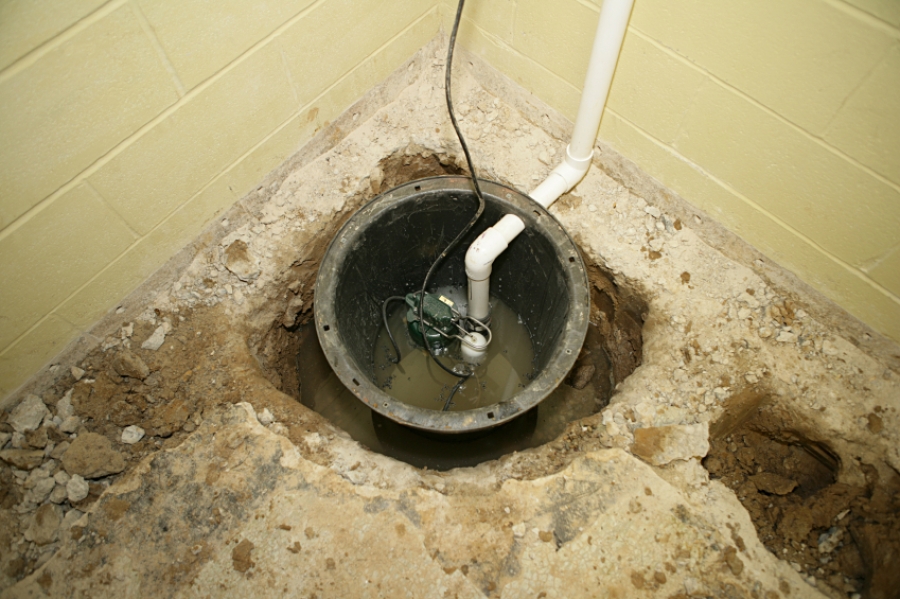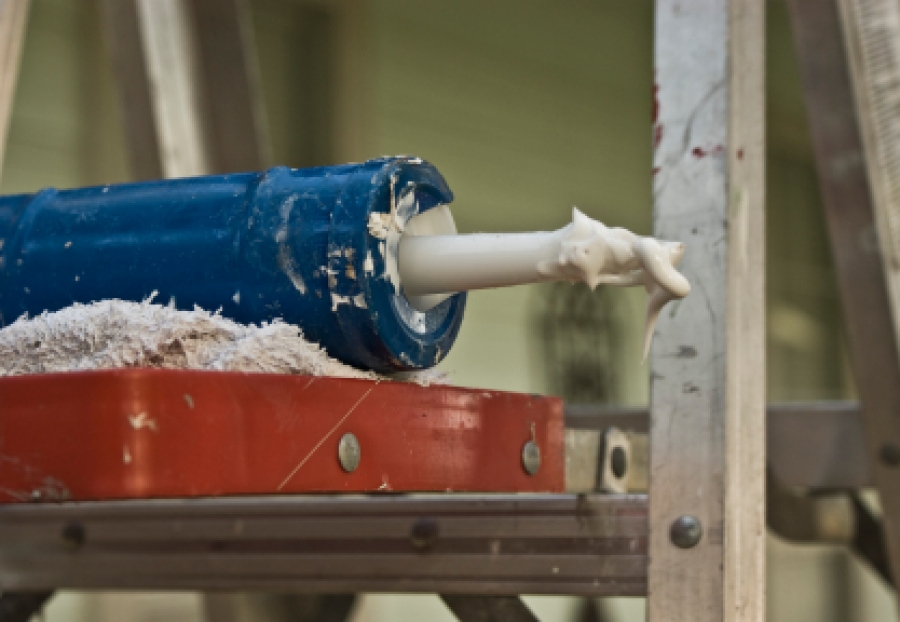Pipe Insulation
Video
Do you know what to do if you have a frozen pipe -- or even how to tell if that is the problem? Learn how to identify and remedy frozen pipes or, better yet, prevent them from freezing in the first place.
According to The Old Farmer's Almanac, this upcoming winter will be a season of unusually cold and stormy weather. While homes in the north are more likely to experience longer durations of cold temperatures, homeowners in the south shouldn’t ignore the potential for one or two cold spells. During the cold winter months, frozen pipes are a serious risk to your health and home. With Old Man Winter right around the corner, now is the time protect your home and prevent frozen pipes.
The science is rather simple. Water freezes as its heat is transferred to the cold air outside the piping. When water freezes, it passes from a liquid state to a solid state and becomes ice. The crystalline structure of ice makes it less dense than liquid water, which explains the familiar phenomenon of expansion. The pressure exerted by the expanded ice inside the limited area of the pipe walls causes plumbing lines to split. When a pipe splits, hundreds of gallons of water can spill through the break and cause significant damage to the surrounding structure and materials. Research conducted by The Building Research Council at the University of Illinois has determined that the potential for water inside a pipe to freeze exists when outdoor temperatures reach 20 degrees Fahrenheit or below. Outdoor faucets and pipes that are located near drafty air gaps, in unheated areas, or inside exterior walls are most vulnerable to freezing temperatures.
Prior to colder weather, make sure everyone in your household knows where the water main shut-off valve is located. Test the valve, shutting it off and then turning it on, to ensure that it is working properly. While the warmer weather allows, take the time to accomplish the following tasks in an effort to protect your home and prevent frozen pipes.
-
Inspect the weather seals at doors and windows and ensure that they are functional. Replace any missing or damaged seals.
-
Seal drafty air gaps between materials using a silicone or acrylic latex caulk.
-
Seal exterior through-wall penetrations using expanding spray foam.
-
Ensure that your sprinkler system and swimming pool lines are properly drained in accordance with the manufacturer’s instructions.
-
Disconnect hoses from outdoor faucets (sill cocks/hose bibs); drain water collected inside the hose.
-
If you have outdoor hose bibs that are not frost-proof, shut off the water to each faucet, open each faucet, and drain any excess water.
-
Place an insulated cover over each outdoor faucet.
-
Cover and insulate any outdoor well, meter, or water line piping.
-
Plumbing located inside the home in areas that are not heated, i.e., attic, garage, basement, or crawl spaces, should be insulated with pipe sleeves made from polyethylene or neoprene foam.
-
Set your thermostat at a minimum of 55 degrees Fahrenheit when you leave your home for an extended period of time during the cold winter months.
Even with preventative measures in place, winter is unpredictable, and additional problems (such as loss of power to your home) may occur. If you lose power, your furnace will not operate to heat your home. Depending on the outdoor temperature and the duration of time before power is restored, this could present a serious issue. If you have a backup power source, such as a generator, you needn’t be concerned. However, if the power to your home is out for any significant amount of time, all plumbing lines, even the plumbing located inside heated areas of your home, can be affected. In such cases you should open cabinet doors and remove ceiling tiles where plumbing is located inside a wall or above an accessible finished ceiling. This will allow whatever interior heat that remains to circulate into these areas and help to keep the plumbing lines warmer than otherwise. You should also open each faucet to allow a steady, slow drip of lukewarm water. This will allow water to continue to move through the plumbing lines. If the water is moving it is less likely to freeze.
If the day comes when you turn on a faucet during the cold winter months and find that there is no water or merely a trickle of water (and that there is no disruption to your water service), then there is a good chance you have a frozen pipe. Immediate action should be taken to prevent any water damage to your home.
Identify the location of the frozen pipe by following water lines from the faucet to unheated areas of the home. Look for a noticeable build-up of frost or ice on the outside of piping walls. Once you have located the frozen section of piping, you will need to apply heat over the area and thaw the frozen water. You should never thaw a frozen pipe using an open flame, because it presents a serious fire hazard. Instead, use a hair dryer, heat pad, heat lamp, portable heater, electric heat tape, or even towels soaked in hot water to thaw a frozen pipe. Keep the faucet open and work from the faucet back to the frozen section. This allows water to escape as it thaws and reduces pressure build-up inside the piping. The piping is no longer frozen when water pressure is restored. Keep in mind that you should shut off the main water valve while the frozen pipe is thawing, as a split pipe can occur at any time. Should your pipe be split or bulging, repairs will be necessary.
Armed with an understanding of the science of frozen pipes, a forecast of the future, and knowledge of prevention and corrective measures, you can prevent frozen pipes and protect your home from significant water damage this winter.

Jeff Calcamuggio
Jeff is an Editor-at-Large for Buildipedia.com who writes and edits Featured At Home and Knowledgebase content. Prior to joining Buildipedia, Jeff's work experience included carpentry, construction documentation, specification writing, construction administration, project management, and real estate property inspection. Jeff is a member of the Construction Specifications Institute (CSI) and an educator at Columbus State Community College and enjoys challenging DIY home improvement projects.



